Videoex Zürich 2022
A vision and selection from the International and National Competitions - by Giuseppe Di Salvatore and Emilien Gür
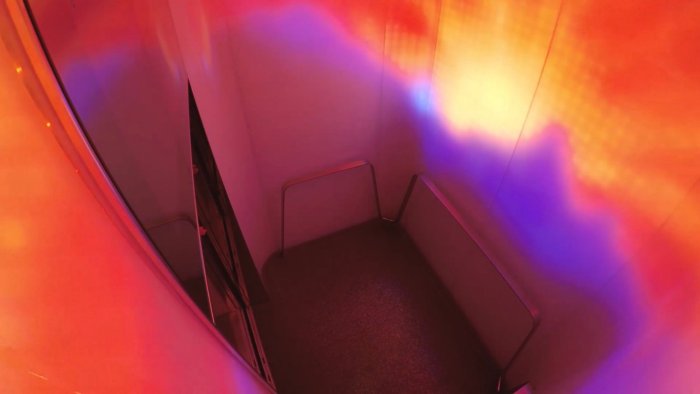
International Competition
(Giuseppe Di Salvatore)
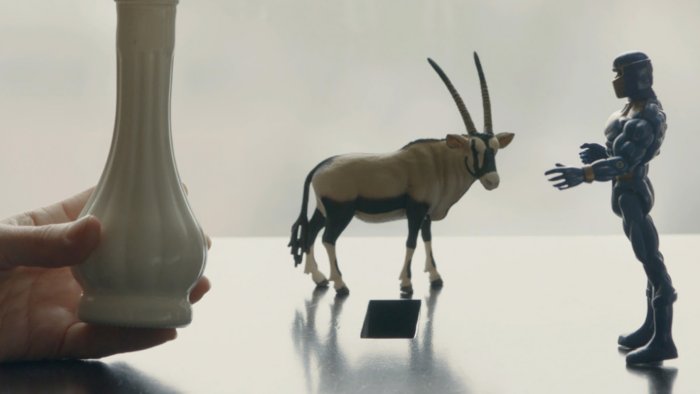
Eliane Esther Bots pushes us to witness the witnesses and enter the world of the translators of the International Criminal Court in The Hague. We see symbolic objects in a hotel room on the top of a tower, while the voices of the translators tell us the unsayable… The calm, and only the sky as framework: the abstract aesthetic allows us to get some distance, but also to focus on the content of their telling, and on their bodies. The mixture of a dry setting and a sensitive approach to the bodies perfectly conveys an empathic experience towards people whose neutrality cannot but risk suffering traumas.
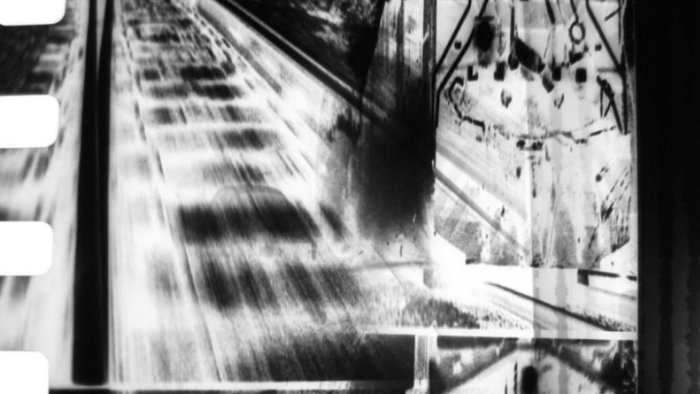
Peter Tscherkassky resumes the cinematic memory of trains in a filmic piece where the mechanics of cinema coalesce with the mechanics of the train. Frame by frame, he deconstructs the history of cinema in order to construct a story of fusion: the fusion of film and train movements. The montage is the main actor of Train Again, not only on the layer of images, but also of sound. Because of this, we will simultaneously consider the theme of the film and concentrate on our own experience of the film. This is why the apparently aggressive montage does not prevent the pleasure of contemplation. The viewers of trains/of films seal the beginning and the end of Tscherkassky’s film, and together with the use of flickering images, we will acknowledge that we, the viewers, are the real protagonists of Train Again.

Lift, lifting, loft – and somewhere down below. Lifts are the subject of Stéphanie Lagarde’s essay, but also work as a symptom of a vertical world of super-modern urban towers. They thereby become a tool for an exploration of hi-tech artificiality which is approached from the point of view of perception. Therefore, the highly aestheticized film follows the movement of lifting, an ascension that is both pleasure of abstraction and fear of falling down. The idealised world of lofts crystallises as a fragile human-all-too-human delusion.

The voiceover speaks Chinese, as if it were a distant and global truth-teller. The textual layer of Cristal Liquido (Gabriel Menotti, Miro Soares)’s Rocha Matriz, both informative and critical, sheds a clear-headed light on the world of stone exploitation. Focusing on the example of Brazil, we discover the industrial chain that connects the plundering of the earth and luxury design. The insistence on slow movements of the camera and the almost abstract beauty of the stone surfaces seems to force an elegiac mood, creating a sharp contrast with the capricious disaster of the exploitation. The use of cheap and redundant music is disturbing, but finally makes sense as an expression of the vulgarity of human carelessness. Only the roaring sound of the mountain will break the poisonous hypnosis…
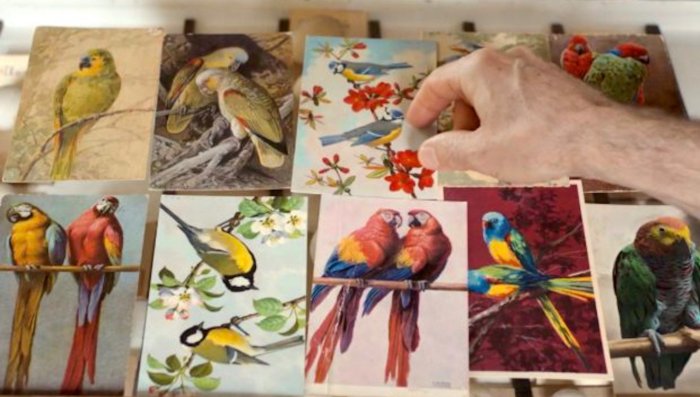
The facts and the history of colonial slavery is not a new motive in Brazilian filmmaking. The film Urban Solutions has the virtue of focusing on the almost invisible job of porteros, the doormen that guard and protect the delicate and fragile places where social separation is maintained. Through a historical detour that integrates the point of view of a German botanist from the 19th century, the filmmakers of cinéma copains (Arne Hector, Minze Tummescheit) and pátio vazio (Luciana Mazeto, Vinicius Lopes) are able to connect the distinction between natural and urban spaces and the division between the exploited and the privileged social classes. The filmic digression through old illustrations and staged tableaux vivants reinforces the idea that the «urban solutions» (of segregation and exploitation) is a question of design…

A clear storytelling – here through a charismatic voiceover – does not necessarily equal a linear narration. Louis Hock presents a series of potentially connected anecdotes in order to build an essayistic reflection on isolation. More similar to an archipelago than a disconnected island, the images of North Star make of the Robinson Crusoe’s motive the springboard to explore the essence of observation – of filmic observation – and the capacity of suspension – of filmic suspense – that is bound to it.
National Competition
(Emilien Gür)
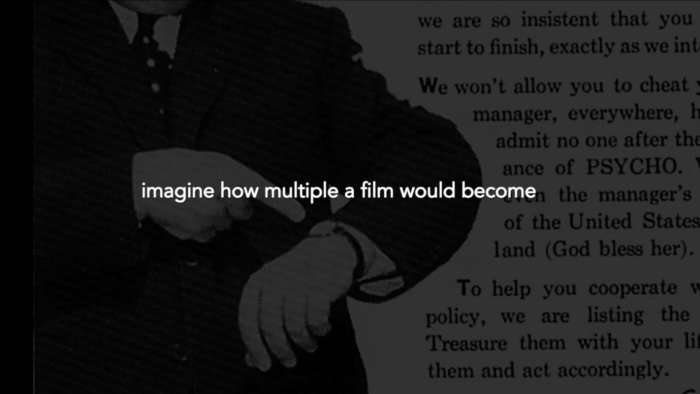
Du cinéma on dit (ou plutôt disait) qu’il est un rite. Quel que soit le film, le protocole est le même : faire la queue (de moins en moins vu la vitesse à laquelle les cinémas se dépeuplent, ce qui, hélas, alerte bien peu de monde), acheter son billet, entrer dans la salle, s’asseoir, le film commence, regarder, le film se termine, se lever et sortir, ouvrir son parapluie si c’est l’automne ou humer l’air frais si c’est le printemps. Johannes Binotto nous rappelle qu’il en fut (et qu’il en est) autrement : hier, il y a longtemps, avant qu’Hitchcock n’ordonne à son public de gagner le cinéma (et dans le silence, s’il vous plaît) à l’heure du début du film (qui s’appelle Psycho), lorsqu’on entrait dans la salle sans se soucier de savoir si la séance avait déjà commencé et qu’on y restait jusqu’à ce que le premier bout de film qu’on avait découvert ne revienne à l’écran ; aujourd’hui, à travers les GIFs qui circulent sur internet pour nous raconter, encore et toujours, la même belle histoire : celle de l’éternel retour. Comme quoi, l’histoire se répète en boucle.
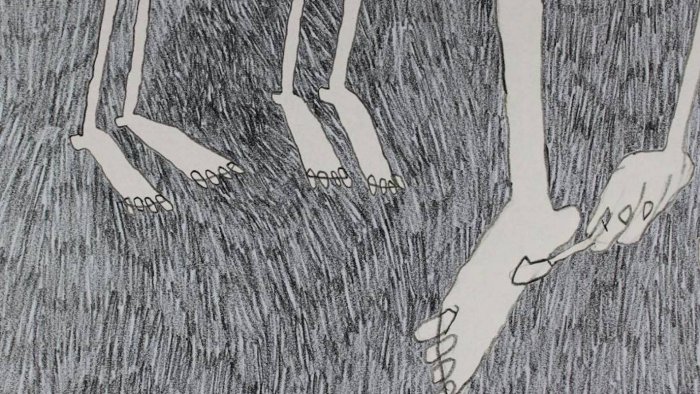
C’est une histoire sans queue ni tête, dira-t-on. Mais c’est bien normal, retorquerai-je, puisqu’il y est question (entre autres choses) d’animaux démembrés, cuits et bouffés. N’insistez pas, s’il vous plaît, ne me demandez pas de quoi il est question dans Sometimes I Don’t Know Where the Sun. D’abord, c’est une question de flic comme dirait Godard. Ensuite, si vous voulez vraiment jouer aux gendarmes et aux voleurs, vous serez perdants d’entrée de jeu : le film de Samantha Aquilino va tellement vite qu’il vous sèmera tôt ou tard. La réalisatrice a trouvé le bon point de fuite. En avant ? Oui, parce que soit le cinéma se vit comme un absolu, soit il meurt.
- Elle est où Ortensia ?
- Je ne sais pas, tu n’as qu’à chercher.
- Je n’y arrive pas. Tu ne vois pas que je tombe ?
- Et si tu jetais un coup d’œil en bas ?
- Justement, il n’y a ni haut ni bas, aucun repère, pas même un sol sur lequel me fracasser.
- Voilà qui fout le vertige.
- Je te l’avais dit : le cinéma de Pauline Julier, c’est de la haute voltige.
- Ce n’est pas un hasard si certains cinéastes ont commencé trapézistes.
- Qui ? Fellini ?
- Non, mais il aimait filmer les clowns.
- Jonas Mekas ?
- Oui, c’est d’ailleurs pour ça que son fragment Notes on the Circus est si beau.
- Vraiment ?
- Non, c’est juste pour cultiver le mythe.
- Quel mythe ?
- Le mythe Jonas Mekas.
- Et Pauline Julier, trapéziste elle aussi ?
- Rien à voir, puisque c’est une histoire de montgolfière.
- Je ne comprends plus rien.
- Tais-toi alors et laisse-toi chuter, c’est agréable.
- Jusqu’où ?
- Jusqu’à l’infini. Jusqu’à Ortensia.
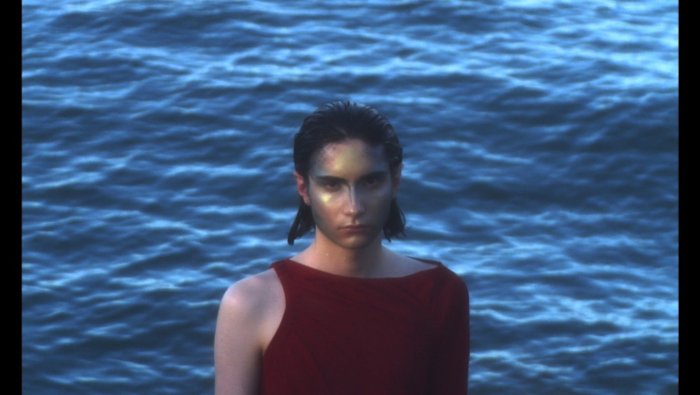
Le cinéma est un miroir dans lequel on se raconte. Dans Dihya, de Lucia Martinez Garcia, un sujet se livre (donc se perd) et s’affirme (donc se retrouve). Le film est composé de visages et de bribes d’histoires (qui nous parlent de désirs et de transphobie sur Tinder et ailleurs). C’est un portrait. Pas un selfie.
Aller en festivals, c’est – ou du moins, ça devrait être – découvrir des films sur lesquels on (des programmateurs.rices, curateurs.rices, directeurs.rices artistiques) tient un discours qui échappe – ou du moins, le plus largement possible – aux enjeux commerciaux de la distribution et de l’exploitation – ou du moins, de la distribution et de l’exploitation comprises comme activités exclusivement commerciales. En d’autres termes, visiter un lieu où la pensée (non commerciale) existe non seulement dans les films, mais derrière eux – soit dans la tête de celles et ceux qui les montrent. J’y attache une certaine importance : que le cinéma continue à être objet de discours plaît au critique qui sommeille en moi. Tout cela pour dire que découvrir la compétition suisse du festival Videoex, c’est, outre les films, découvrir ce que Patrick Huber et son équipe considèrent comme le cinéma expérimental suisse (ou du moins, en Suisse) – les formes qu’il prend, comment il se pratique et par qui. Un geste qui n’a rien d’innocent. L’entreprise à laquelle je me propose de me livrer ne l’est pas moins : identifier quelques gestes expérimentaux de et dans la sélection nationale proposée par Videoex.






